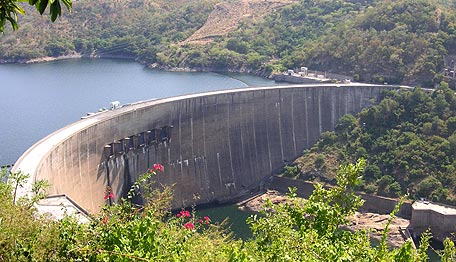Kariba power station to stay online
Share

Harare –In much needed good news, the Zimbabwe Power Company has been allocated additional water to continue generating electricity at Kariba hydro-power station, albeit at a reduced capacity, while additional regional imports will be coming in to shore up supplies and curtail the prevailing rolling outages.
In addition, the new Hwange unit 7 will start providing 300 megawatts into the national grid this month.
The Zambezi River Authority (ZRA) had directed the ZPC to cease all power generation activities with immediate until at least January as it had exhausted its water allocation, further worsening the power supply situation in the country which has seen consumers going for long hours without power.
But, allaying fears of a “dark Christmas” Energy and Power Development Minister Zhemu Soda said a ZRA Council of Ministers meeting held on Thursday had resolved to keep Kariba running.
“There have been some negotiations which ended with a resolution to allow Zimbabwe to continue to generate given the importance of running Kariba power station. So, we shall continue to generate, but obviously there is a capacity that will be lost, about 300MW will not be generated for the month of December until January when the hydrological situation will be reviewed,” he told a press conference.
“Kariba has always been running on 600MW, but it will now be running between 250-300MW as the daily average.”
On imports, Soda said engagements were already underway to secure additional power from the region.
“There is a possibility of getting some capacity from Mozambique (around 150MW). With Zambia, negotiations are still underway with a possibility of getting additional capacity. Already we are importing 100MW from Zambia,” he said
“We shall also be participating on the Southern African Power Pool market through the day ahead market where some capacity will also be obtained.”
Regarding the Hwange thermal power station, Soda said due to its age, maintenance will be key to ensure it sustains its current output.
“Currently Hwange is producing an average of between 300 and 400 MW and we expect that if Hwange can be maintained and we get the 400 MW that will also assist in the meantime until we get to the next review of the hydrological situation of Kariba,” he said.
“We are also looking forward to the commissioning Hwange unit 7. We expect it to be feeding power to the national grid this month. Already some commissioning tests are underway.”
Soda said the small thermals, Harare, Munyati and Bulawayo also had a key role to play, with plans afoot to ensure they up their contribution to a combined total of 45MW.
On the demand side, Soda said consumers were being encouraged to employ energy conservation and efficiency measures.
“Lights must be switched off in all offices at night and other measures like right sizing of equipment, use of energy savers,” he said.
“Net-metering regulations were amended to exempt from licensing a capacity of up to 5MW. This incentive is expected to result in increased internal generation as companies set up their own solar generation systems.”
New Ziana









